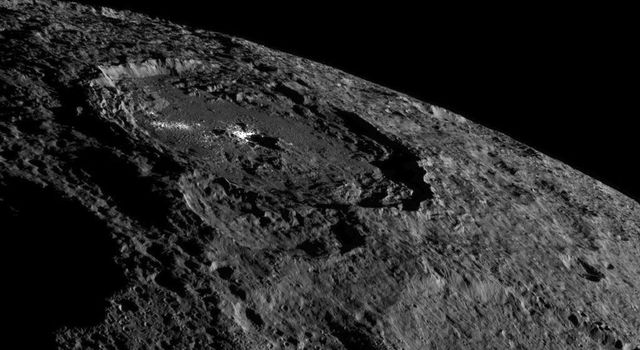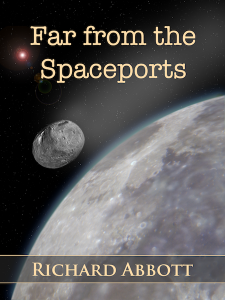There’s been a whole rush of space news these last few days, and what better place to gather some of it together than here? Most of it has some relevance to the Far from the Spaceports series…

The first item I saw was an update from the Dawn spacecraft, going through a series of changes to its orbit around Ceres. For a long time it was orbiting closer to the asteroid than the International Space Station is to Earth, less than 400km from the surface, and now it is returning to a much higher orbit to complete some science measurements from about 1500km. And as a treat we got back this picture of the Occator crater, one of the main locations for the bright white spots scattered here and there on the surface. More details can be found at the NASA site.
In between I read how Elon Musk is pushing ahead his plans for a privately funded settlement on Mars – the announcement was made back at the end of September but I had not previously followed the details through. His idea is ambitious, involving a fleet of reusable rockets working towards a colony of a million individuals, sent in groups of 1-200 at a time. More details can be found at several places including space.com. According to his figures, the price per individual will drop to around $1-200,000 – a lot of money, to be sure, but not unreachable. His current aim is to get an unmanned version sent on its way in about 18 months, and manned flights within a decade. We shall see…

Then Cassini sent back this splendid picture of Saturn’s north pole. I was especially interested in that, since the planned book 3 following after Far from the Spaceports and Timing will include Saturn – or at least its moons – as a destination. Cassini has returned vast amounts of information about Saturn since 2004, but will run out of fuel late next summer and will be deliberately rerouted to burn up in Saturn’s atmosphere. This picture was taken at something like 1.4 mllion km from Saturn – 3 or 4 times the distance from the Earth to the Moon. More details can be found at the NASA site.
Finally a science article on a potential new form of spaceship engine has now been peer reviewed and published… Called the EmDrive, it was first worked on about 15 years ago by a British scientist, Roger Shawyer , and has now been taken up by NASA for serious study. The theoretical problem is that nobody has come up with a satisfactory explanation of how it could work: however several teams in the US and China have reported success, so maybe it’s going somewhere. Have a look at this link forthe latest news, or this link for some very sketchy details.
That’s all for today, but I’m sure there will be much more to come…


